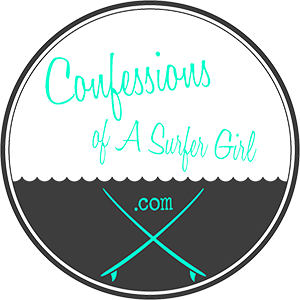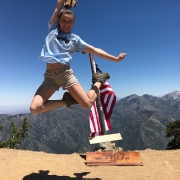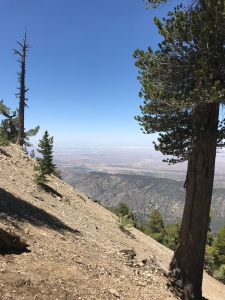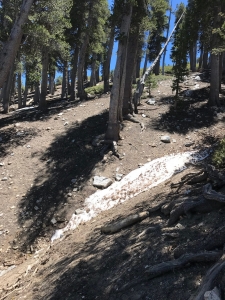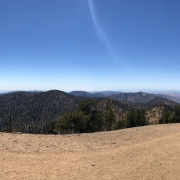If you are any kind of surfer, you understand that crowds have been and still are an increasing factor in your wave search. Some have quit surfing all together (NEVER!) while others play hookie in hopes to score two-foot mini-drainers. Those “sick days” no longer apply as more kiddos are now home-schooled and groomed to be the next Slater or Reynolds. Midday lunch session escape? Nah–you’re surfing with your boss and the marketing team on their Wavestorms and funboards at Creek, if you are so lucky.
“Hey, can you teach me how to surf?! I just got this 9-foot board and I don’t know how to duck dive it.” *bangs head against desk repeatedly*
Good luck, buddy ole pal!
Within the last decade, surfers have really pushed the limits to reach out to the corners of an otherwise round globe in search of their perfect ride with minimal crowds. If it has a body of water and some form of wind, there is wave potential, right? After my experience with the latest wavepark craze in Texas and coming out the other side mostly healthy, (albeit slightly worried–see ‘amoeba’ and ‘BSR Cable Park’), I recognize that not everyone needs Trestles to feel satiated…well, except for me and 50 of my best friends on a Saturday morning.
I want to believe and know for a FACT there is a secret adventurer in all of us aqua wanderlusts…someone who’s been cooped up since the Endless Summer days and so desperately needs to get out of the park-pay-surf routine. If you’ve got the bengies, balls and/or brains, below is a list of options you might consider when scanning the discount travel interwebs.
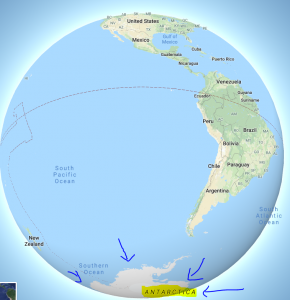
Now, I wonder if Germany charges for board bags…
Antarctica
Is your surfing mission to solely avoid all people and/or crowds? While I might recommend an easier remote Baja trip, this blog is not about the typical and the easy, but more focused on the “WTF mate?!” reaction. If you’re hell-bent on being completely antisocial with a frigid ‘tude to boot, the approximately 11,000 miles of Antarctica’s icy coastline is your best…friend? Crowds will not be a problem here. If it ever becomes one, I quit. Even with my crappy screen shot here, you can see major point break potential. Chilean pro surfer Ramon Navarro was the first pro to brave the freezing waters of King George Island in 2014. If you’ve got the grapes (assuming you don’t mind frozen ones), I challenge you to surf the sub-zero temperature ranges while I venture to warmer parts unknown comparatively.
The Great Lakes

Not exactly balmy. Great Lakes for the win! Photo: secondwavemedia.com
The Great Lakes are nothing to sneeze at–they hold 6 quadrillion gallons of water and are considered one-fifth of the world’s fresh water supply. First: have you ever even heard of anyone using ‘quadrillion’ outside of space travel? I haven’t. The lakes also offer more than 10,000 miles of shoreline, which, according to magicseaweed.com, is more than the U.S. West and East coast combined! Because of the Great Lake’s size, the fetch produces large, surfable waves–with the right conditions. Often requiring lots of neoprene and vasoline (protect that mug!) as well as patience and an interest in surfing in the snow, the Great Lakes can have good waves, but do you have the balls? Someone did and I wonder where he got them–The first Great Lakes surfer was a G.I. with a longboard, who was returning from Hawaii in 1945. According to the same site, the eastern shore of Lake Michigan and northeastern shore of Lake Erie saw more surfers combing their shores throughout the 60’s and it now exists today–remember that part in Dana Brown’s “Step into Liquid” movie back in 2003??
See also:
Vans’ “Weird Waves Season 1”
Surf Shop’s “Unsalted: A Great Lakes Experience”
Red Bull’s “Surfing in the Great Lakes”
Eisbach River–Munich, Germany
In the most landlocked of European countries, it turns out surfing is a thing in Munich, Germany–namely ‘River Surfing.’ The mile-long man-made Eisbach (aka: “Ice brook”) river is a side arm of the Isar River. Although at this point crowds MAY be a factor since pros like Mick Fanning have given it a go, the wave is not exactly ‘friendly.’ Also known as “E1,” the wave was specifically
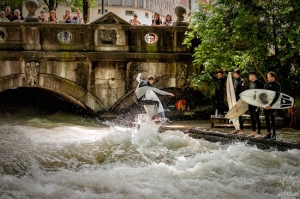
Germans mean business about not just beer. Photo: Riverbreak.com
created to be ridden by experts. Folks literally sit in line and take turns (imagine that!) for waves, so dropping in on someone is completely unacceptable. Not gonna lie: I would absolutely LOVE to hear an errant tourist get bitched out by a German local.
According to this website, the concrete baffles that support the wave’s flow can break your neck and the fast-moving current combined with a rocky riverbed will gladly take out your board that probably you paid a hefty travel fee. Is there ding repair in Germany? The wave and the crowd may be tough, but getting to the lineup isn’t: Throw your board in front of you and use the river’s momentum. But, beginners be warned: according to the site, if you’re a beginner, “just forget it.” However, there is a spot named “E2” that is supposedly more approps–not sure how the Germans view the Wavestorm crowd or how they define “beginner” while they nonchalantly slug “Das Boots.”
Clarks Fork River–Missoula, Montana
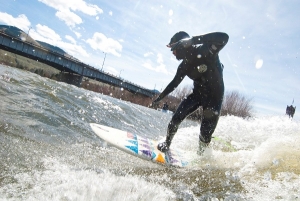
Brennan’s Wave in the Clark Fork River, Montana.
Photo: Sean Jansen
My longtime friend Sean Jansen wasn’t planning on moving to Montana, or planning anything that does not involve being outside and in nature. The San Clemente local-turned Montana resident is no stranger to thinking outside the box or shall we say, wave? With the nearest wave being over 2,000 miles away, Jansen has taken up river surfing in the icy waters of Clarks Fork River. Just as in any kind of wave, there is a science and adventure to river surfing and Jansen is no stranger to either. See his river surf explanation below:
The same winter storms that hit Washington, Oregon, and California keep marching inland after they hit. Once in Montana, those storms land as snow, coupled with storms from Canada. Once spring hits and temperatures rise above freezing, snowmelt happens and floods the river, hence the brown water. And river surfing is born.
Brennan’s Wave is the name of the wave and it is an artificial wave created by concrete submerged.
Silver Dragon–Qiantang River, China
I hate to disappoint, but this is NOT Game of Thrones…or were you already disappointed by that anyway? :) However, maybe I will take my cool braided locks and my future …Lost board, which will have Drogo painted on it, to China to surf the elusive and rare Silver Dragon -Qiantang River Tidal Bore. A tidal bore happens during specific conditions–the spring or fall tide and full moons. There’s even a festival dedicated to this occurrence known as “The Tide-Watching Festival” held on the 18th day of the 8th month in the Chinese calendar. The festival brings 170,000 people and has been celebrated for hundreds of years. The break is named the Silver Dragon because it is first seen from a distance as a stroke of silver on the horizon along the Qiantang River located in East China. The river and Hangzhou Bay are known for the world’s largest tide bore. As you can see here, the wave is really nothing to snub. It’s got some juice.
